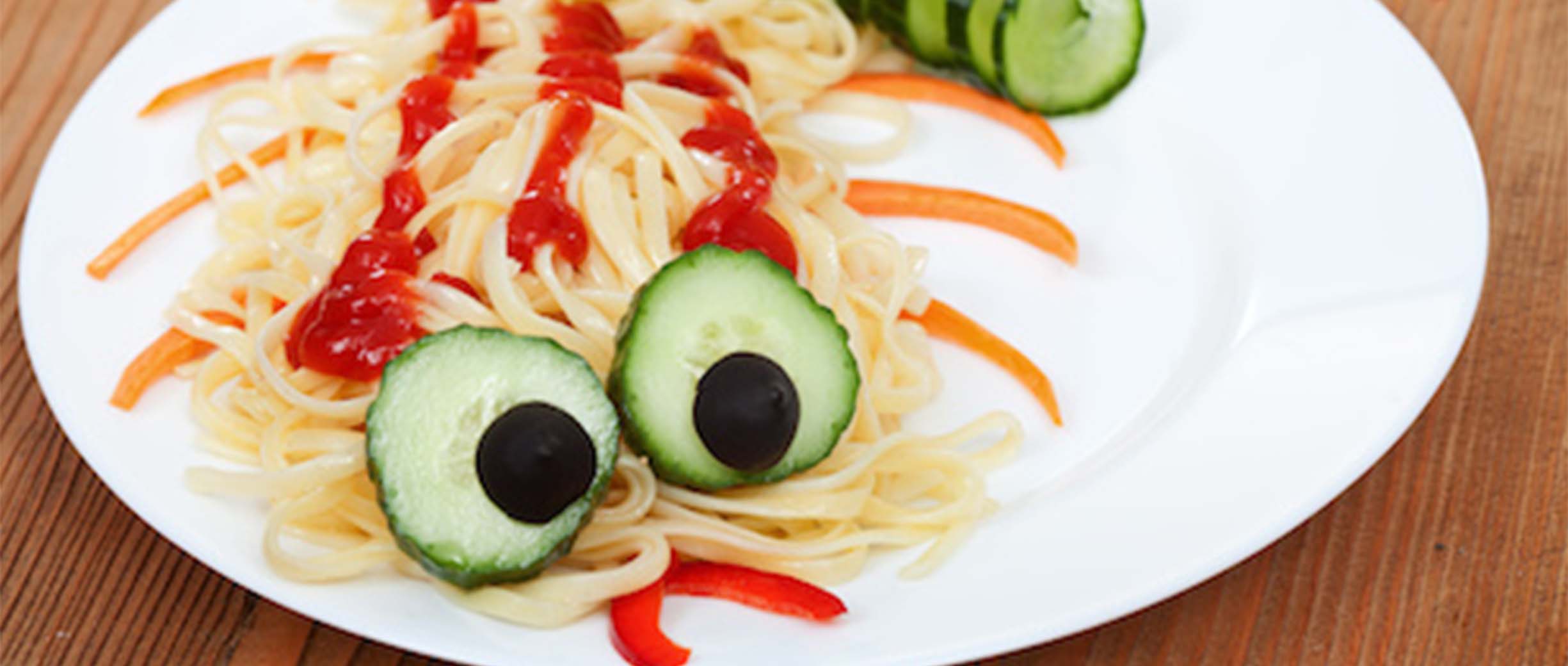
Ways to Get Kids to Eat More Vegetables


For most parents, the challenge of getting kids to eat their vegetables is all too familiar. But fear not, it can be done! There are many simple tricks—you just have to find which work best for your family, and stay consistent and persistent.
Try the following tips to encourage your kids to experiment and enjoy a variety of fruits and vegetables.
Boost the Flavor
No one wants to eat fruits and vegetables that lack flavor or texture, not even you! To get your kids to love fruits and vegetables, ensure they taste good. One way to boost flavor without extra effort is to buy produce when it’s in season, especially tomatoes. They’re juicy, flavorful and sweet in the summer, but can be mealy and bland in the winter. Also experiment with different varieties of vegetables. For example, your family may loathe broccoli, but they might enjoy its longer, sweeter cousin, broccolini. And most kids protest Brussels sprouts, but they might like the new Brussels sprout-kale hybrid, especially when in season during the autumn.Focus on Color
Interest in food often begins with its visual appeal. Unappetizing foods are not likely to tempt anyone, and they may sit through a meal untouched. Think about the yucky lunch food always served in movies—it’s usually brown mush. Preparing meals full of color helps make them more appealing, and kids are more likely to eat a fruit or vegetable if it has high visual appeal. It can be as simple as slicing apples and stacking them into a shape, or even using a spiral apple cutter—then adding a contrasting color like orange pepper slices. Try serving veggies in the shape of a happy face on a plate. Make cucumber circles the eyes and sliced olives the pupils. Continue to try new ways of presenting fruits and vegetables, and don’t get discouraged if they aren’t immediately accepted. Try enforcing a “one bite” rule. That is, ask your kids to take at least one bite of all new foods. Let them know that it’s okay if they don’t like it, but they won’t know until they try it.Tip:
Make colorful vegetables readily available, and your kids will more likely eat them. Store a bowl of cherry tomatoes, celery, bell peppers, carrots and snap peas in the fridge so they can grab and go.Hide Them
Add chopped vegetables and fresh herbs to store-bought marinara sauce or salsa to add fresh flavor and nutrients. Carrots, celery and parsley blend well in marinara sauce, and cilantro, corn, black beans and fresh tomatoes are great additions to salsa. If your children turn up their noses and the sight of certain vegetables, finely mince them in a juicer or blender before adding them. Your child won’t even notice, but they will be enjoying a much more nutritious meal.Build on What’s Familiar
Sneak new vegetables into dishes that kids already love. For example:- If they love tomato sauce, add in a couple tablespoons of pumpkin, extra basil or puréed, cooked carrots. Carrots add natural sweetness to just about anything.
- Blend mashed cauliflower or parsnips with mashed potatoes.
- Stir puréed squash, salsa or frozen petite peas into whole grain macaroni and cheese sauce.
- Add chopped mushrooms to ground meats to complement the texture, plus many mushrooms are good sources of vitamin D if exposed to sunlight before harvesting—check the label.
- For children opposed to green foods, serve smoothies in stainless steel drinking containers. Then they won’t see or taste the greens you’ve added to their fruit smoothies.
